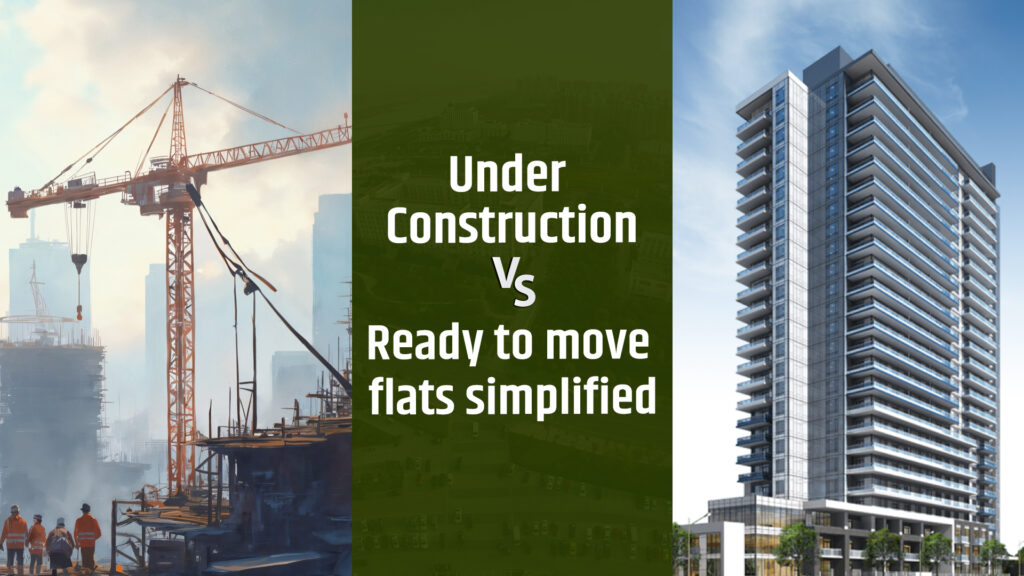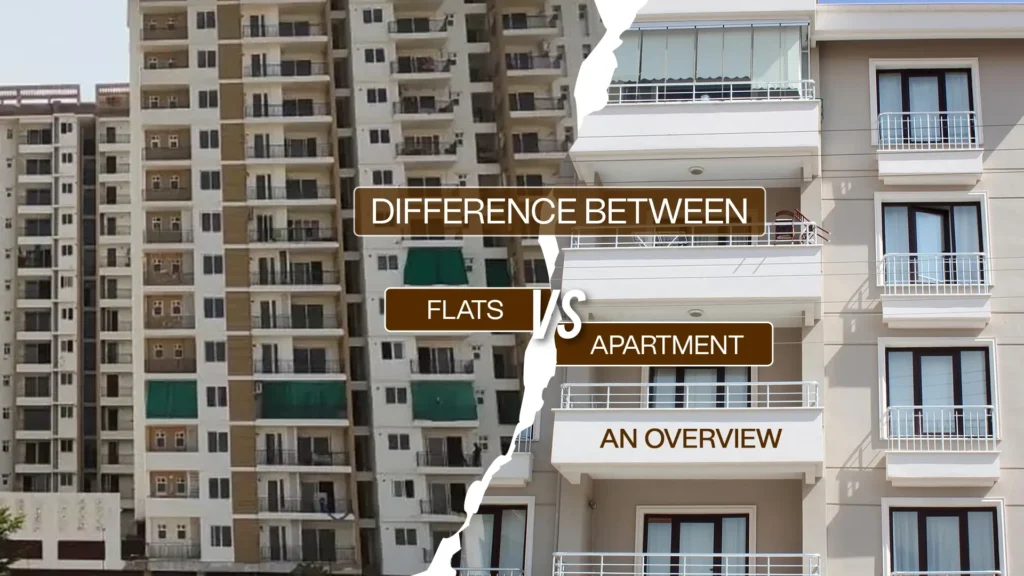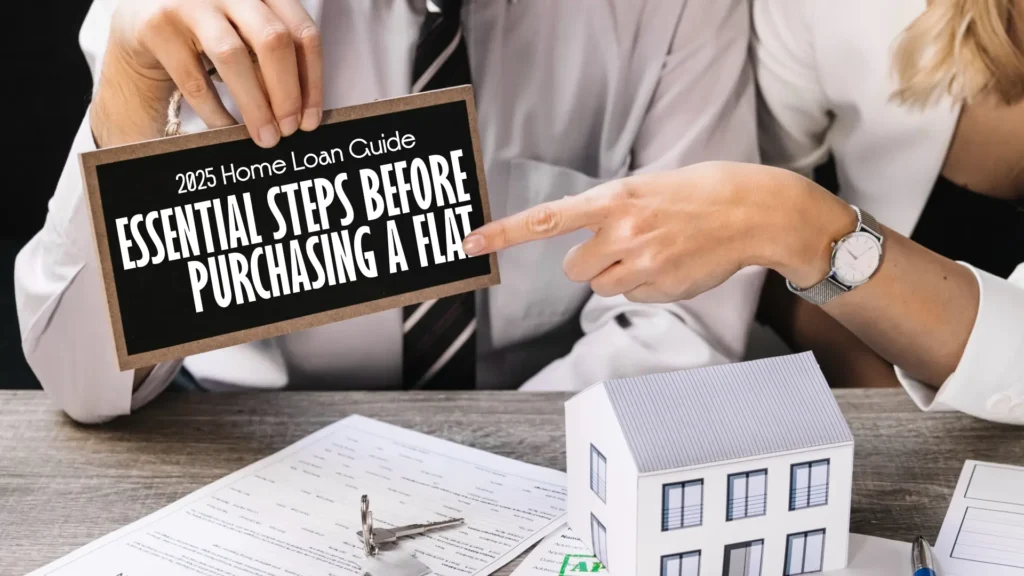Buying a home is a really important choice. Possibly one of the biggest you will ever make in your life. One of the first things you will need to decide is whether to buy an apartment that is ready for you to move into now, or one that’s still being built.
- Under-construction flats are still being built. You pay in installments, wait for completion, and hope everything goes as planned.
- Ready-to-move flats are finished. You see what you get, move in quickly, but often pay a higher price.
Both have pros and cons. One might save you money but test your patience. The other gives you certainty but costs more upfront.
Under-Construction Flats: What You Need to Know
Imagine buying a home that doesn’t exist yet—at least, not fully. That’s what under-construction flats are. You’re paying for a promise: a home that will be built, usually in a few years.
How It Works
- You book the flat early, often just based on floor plans and sample designs.
- Payments happen in stages—some at booking, more as construction progresses.
- You get possession only after the builder finishes everything (or at least most of it).
Why People Choose Under-Construction Flats
- Lower Prices – Builders charge less than for under construction homes. It is like an early-bird discount.
- Payment Flexibility – You can spread out your payments over time. No need to pay the entire amount at once.
- Customization Options – Some builders allow you choose the wall colors, kitchen designs, and even the tiles.
The Risks You Should Know
- Delays Happen—Your move-in date may be delayed because of bad weather, a lack of workers, or financial difficulties. Months or even years, at times.
- Uncertainty – What happens if the finished structure differs from the brochure? You won’t find out till it’s finished.
- Hidden Costs – Some projects charge extra for amenities like a gym or parking, later on.
Who Should Consider It?
- If you are not in a hurry and can wait 2-3 years.
- If you want a cheaper deal and don’t mind some risk.
- If you like the idea of personalizing your space before it’s built.
Apartments that are still under development can be a wise decision. But only if you can wait patiently and have faith in the process. This might not be the ideal option for you if delays cause you worry.
Ready-to-Move Flats: The Instant Home Solution
There is no need to wait or worry about whether the bathroom tiles will resemble the brochure. The ready-to-move advantage is that.
How It Works
- The building is complete. All flats are finished, and some might even have previous owners.
- You pay the full amount (or take a loan) and get possession immediately
- What you see is exactly what you get—no surprises
Why People Prefer Ready Flats
- Move In Tomorrow – Got a job transfer? Kids starting school? You can literally unpack next week
- Zero Construction Risk – There is no construction risk. Don’t worry about builder problems or delays.
- Know What You’re Buying – You can examine the noise levels, test the water pressure, and verify that the elevator is operational.
- Bargaining Power – You may be able to negotiate a reduction because vendors occasionally need to make quick sales.
The Trade-Offs
- Higher Price Tag – That convenience comes at a cost—often 15-20% more than under-construction
- Limited Customization – Walls are already up, floors are set. Want to change something? That’s extra
- Older Designs – Some ready flats might be a few years old with outdated layouts
Who Should Go For It?
- If you need a home right now, not three years from now
- If you hate uncertainty and want to physically inspect everything first
- If you’re okay paying more to skip the waiting game
Ready flats are like buying a car from the showroom instead of waiting for next year’s model. You pay more, but you drive it home today. No suspense, no delays—just keys and a new address.
Key Comparison Factors: Under-Construction vs Ready-to-Move Flats
Let’s put these two side by side. Each has its perks. But which one works for you?
1.Cost & Payment
Under-construction:
- Lower initial price (sometimes 10-30% cheaper)
- Pay in installments as construction progresses
- Risk of price hikes if project gets delayed
Ready-to-move:
- Higher upfront cost (you’re paying for convenience)
- Usually one-time payment or full loan amount
- No surprise costs—what you see is what you pay
2.Time Factor
Under-construction:
- Wait time: 1-5 years or more, if delayed
- Good if you are not in a hurry
Ready-to-move:
- Move in next week if you want
- Best for urgent needs (job shifts, school admissions)
3.Risk & Uncertainty
Under-construction:
- Builder might delay, change plans, or even abandon project
- Final product might not match promises
Ready-to-move:
No construction risks
You can inspect everything before buying
4.Customization
Under-construction:
- Some builders let you tweak layouts or finishes
- Choose tiles, kitchen setups early
Ready-to-move:
- What’s built is what you get
- Renovations cost extra time and money
5.Legal & Financial Benefits
Under-construction:
- GST benefits (currently 1% for affordable homes, 5% for others)
- Tax deductions on home loans start only after possession
Ready-to-move:
- No GST (only registration charges)
- Tax benefits kick in immediately
✔ Do I need it now? → Ready-to-move
✔ Do I trust the builder? → If no, go ready
✔ Am I okay with extra costs later? → If no, ready is safer
Conclusion: Which Flat Wins? It Depends on You
At the end of the day, there’s no “better” option. Just what’s better for you.
- If you are the patient, deal-hunting type who doesn’t mind waiting, under-construction could save you money.
- If you need certainty and a home ASAP, ready-to-move is the no-surprises choice.
Final Checklist Before Deciding
- Timeline
- Budget
- Risk Tolerance
- Future Plans
No matter what you pick, check:
- For under-construction, check RERA status and builder reputation.
- For ready flats, inspect everything—water pressure, wiring, neighbors.
Your home isn’t just walls. It is where life happens. Choose the option that fits your life, not just your wallet.
FAQs
1.Is under-construction better than ready-to-move?
Under-construction is better if:
- You want lower prices
- You can wait 2-5 years
- You are okay with some risk
Ready-to-move is better if:
- You need to move in fast
- You prefer certainty (no delays, no surprises)
- You can pay more upfront
2.Which property investment is best—under-construction or ready possession?
For investment, it depends on your strategy:
Under-construction:
- Cheaper entry price
- Higher appreciation potential if the area develops
- Riskier (delays can hurt returns)
Ready possession:
- Immediate rental income
- Easier to resell
- Lower appreciation (most growth already priced in)
3.What are the pros and cons of buying under-construction property?
Pros:
- Lower initial cost
- Payment flexibility (installments)
- Possible customization (layouts, finishes)
- Higher appreciation potential if the area grows
Cons:
- Construction delays (common)
- Risk of builder issues (poor quality, stuck projects)
- Uncertainty until completion
- No immediate use (can’t move in or rent out)




 Enquiry
Enquiry Call
Call Whatsapp
Whatsapp